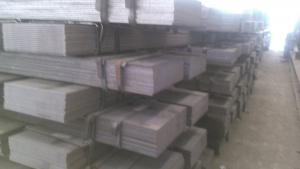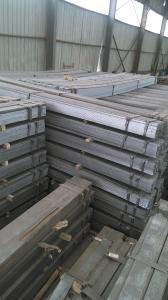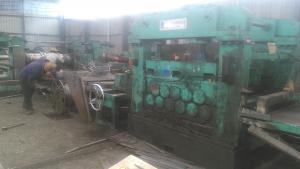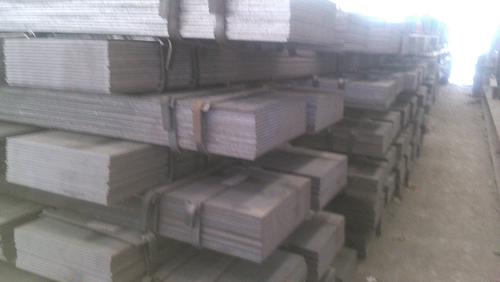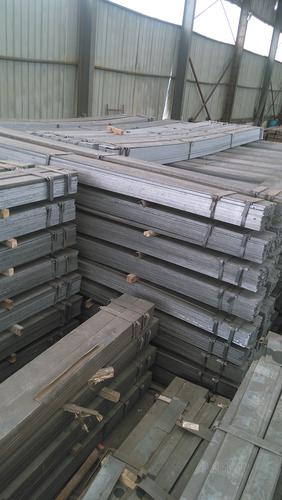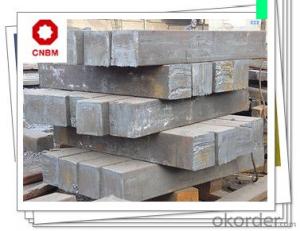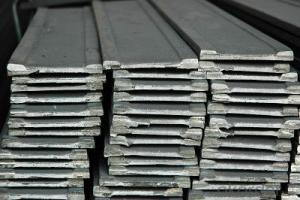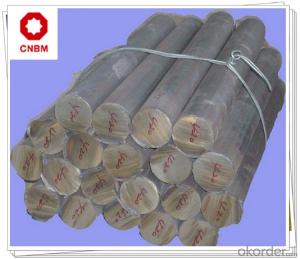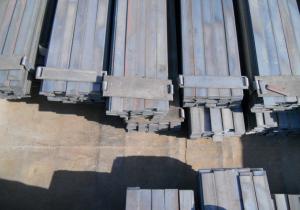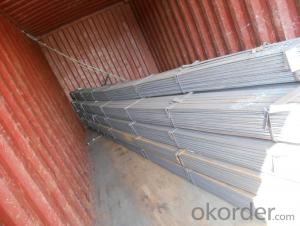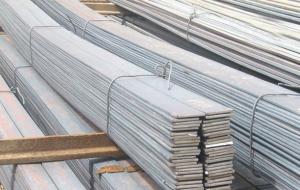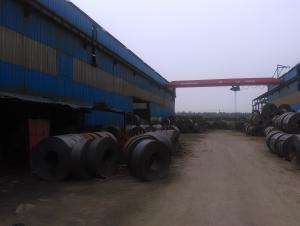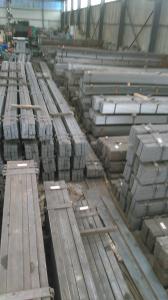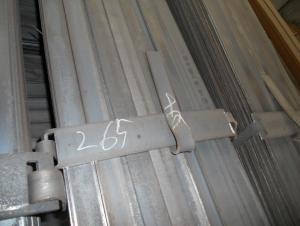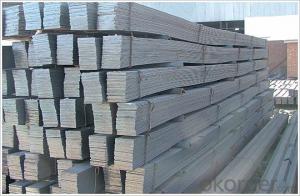Q235 Iron Flat bar Section Structual Steel
- Loading Port:
- Tianjin
- Payment Terms:
- TT or LC
- Min Order Qty:
- 50 m.t.
- Supply Capability:
- 10000T m.t./month
OKorder Service Pledge
OKorder Financial Service
You Might Also Like
Product Description:
OKorder is offering Q235 Iron Flat bar Section Structual Steel at great prices with worldwide shipping. Our supplier is a world-class manufacturer of steel, with our products utilized the world over. OKorder annually supplies products to African, South American and Asian markets. We provide quotations within 24 hours of receiving an inquiry and guarantee competitive prices.
Product Applications:
Q235 Iron Flat bar Section Structual Steel are ideal for structural applications and are widely used in the construction of buildings and bridges, and the manufacturing, petrochemical, and transportation industries.
Product Advantages:
OKorder's Q235 Iron Flat bar Section Structual Steel are durable, strong, and wide variety of sizes.
Main Product Features:
· Premium quality
· Prompt delivery & seaworthy packing (30 days after receiving deposit)
· Can be recycled and reused
· Mill test certification
· Professional Service
· Competitive pricing
Product Specifications:
Manufacture: slited
Slitting precision (width) : 0.5 mm or less
Raw material: Q235B, Q345B, Q235-1 b
crosscutting precision (length) : 2 mm or less
Processing: the thickness of 2.0-16 mm;
Shear length: 2000 mm above
Wide degree: 15-1250 - mm;
Leveling precision: 1-2 MM square
Packaging: Export packing, nude packing, bundled
FAQ:
Q1: How many tons of steel products could be loaded in containers?
A2: Usually the steel products are delivered by bulk vessel because of the large quantity and the freight. However, there are no bulk vessel enter some seaports so that we have to deliver the cargo by containers. The 6m steel product can be loaded in 20FT container, but the quantity is changed according to the size, usually from 18tons to 25tons.
Q2: How do we guarantee the quality of our products?
A2: We have established an advanced quality management system which conducts strict quality tests at every step, from raw materials to the final product. At the same time, we provide extensive follow-up service assurances as required.
Q3: How soon can we receive the product after purchase?
A3: Within three days of placing an order, we will arrange production. The normal sizes with the normal grade can be produced within one month. The specific shipping date is dependent upon international and government factors, the delivery to international main port about 45-60days..
Images:
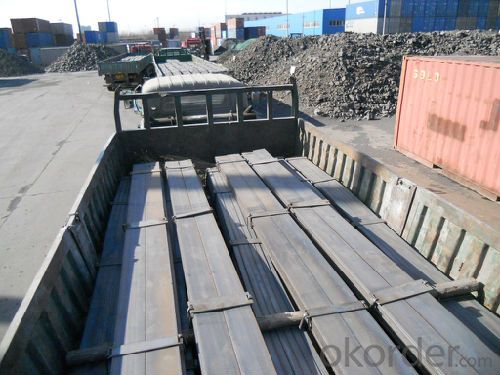
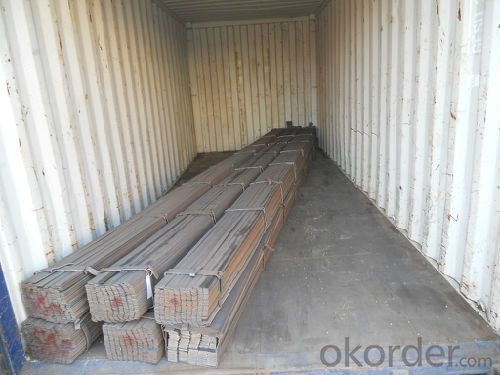
- Q: Can steel flat bars be used for making architectural structures?
- Certainly! Architectural structures can indeed be made using steel flat bars. Steel, known for its durability and strength, is commonly employed in construction due to its ability to withstand different weather conditions and its high tensile strength. Steel flat bars possess the advantage of being easily fabricated and shaped into various sizes, rendering them versatile for diverse architectural designs. They can be utilized for the construction of beams, columns, frames, and other structural components in buildings. Moreover, steel is an environmentally friendly choice as it is sustainable and recyclable. Consequently, steel flat bars find extensive usage in the construction industry and are highly effective for creating architectural structures.
- Q: Are steel flat bars suitable for electrical grounding?
- Yes, steel flat bars can be suitable for electrical grounding. Steel is a good conductor of electricity, which is an essential property for grounding materials. When properly installed and connected to the electrical system, steel flat bars can effectively dissipate electrical charges and provide a safe pathway for electrical faults to be directed to the ground. However, it is important to ensure that the steel bars are securely bonded and connected to the grounding system according to the applicable electrical codes and standards. Additionally, regular maintenance and inspections should be carried out to ensure the integrity and effectiveness of the grounding system.
- Q: Can steel flat bars be used as reinforcement in concrete?
- Steel flat bars can indeed serve as reinforcement in concrete. They are widely recognized as either flat bars or flat steel bars. Concrete structures frequently incorporate these bars to bolster their strength, longevity, and overall stability. By integrating the steel bars into the concrete matrix, they confer tensile strength and safeguard against cracking or failure when subjected to a load. Utilizing flat bars as reinforcement in concrete yields numerous benefits, including heightened resistance to bending, augmented load-bearing capacity, and enhanced structural integrity.
- Q: What are the different specifications for steel flat bars?
- Steel flat bars can have different specifications depending on their dimensions, such as width, thickness, and length. They can vary in width, ranging from 1/8 inch to several inches, and thickness, ranging from 1/8 inch to 1 inch or more. Lengths can also vary, commonly found in standard sizes of 8, 10, or 20 feet, but can be customized as well. Additionally, steel flat bars can have different grades or types of steel, such as carbon steel or stainless steel, which can affect their strength and corrosion resistance properties.
- Q: What is the carbon content in steel flat bars?
- The carbon content in steel flat bars varies depending on the grade and type of steel being used. Generally, carbon steel flat bars contain a carbon content ranging from 0.15% to 0.60%. However, high carbon steel flat bars can have a carbon content as high as 2.1%. The carbon content in steel flat bars is a crucial factor that determines the strength, hardness, and other mechanical properties of the steel. It is important to consider the intended application and requirements when selecting the appropriate carbon content for steel flat bars.
- Q: Can steel flat bars be customized in terms of size and shape?
- Yes, steel flat bars can be customized in terms of size and shape. They can be cut and shaped according to specific dimensions and requirements to meet the desired specifications for various applications.
- Q: Are steel flat bars commonly used in the renewable energy sector?
- Yes, steel flat bars are commonly used in the renewable energy sector. They are often used for various applications such as structural support, framing, and mounting systems for solar panels and wind turbines. Steel flat bars are valued for their strength, durability, and versatility, making them an ideal choice for renewable energy infrastructure projects.
- Q: Can steel flat bars be used for making handrails or guardrails?
- Yes, steel flat bars can be used for making handrails or guardrails. Steel flat bars are a common choice for constructing handrails and guardrails due to their strength and durability. They can provide the necessary support and stability required for ensuring safety and preventing falls. Additionally, steel flat bars can be easily fabricated and customized to meet specific design requirements, making them a suitable material for constructing handrails and guardrails in various settings such as staircases, balconies, decks, and walkways.
- Q: How are steel flat bars different from steel round bars?
- Steel flat bars and steel round bars differ in their shape and physical properties. The most obvious difference is their shape: steel flat bars have a flat surface and rectangular cross-section, while steel round bars have a cylindrical shape. In terms of applications, steel flat bars are commonly used in construction, manufacturing, and industrial projects where a sturdy and durable material is required. They are often used as support or reinforcement structures due to their flat surface, which provides stability and strength. Steel flat bars are also versatile and can be easily welded, cut, and shaped into various forms, making them suitable for a wide range of projects. On the other hand, steel round bars are primarily used in applications that require strength, such as shafts, axles, and structural components. The cylindrical shape of round bars offers excellent strength and load-bearing capacity, making them ideal for applications where torsional forces are involved. Additionally, round bars are commonly used in the manufacturing of machinery, tools, and equipment due to their ability to withstand high stress and pressure. Another difference between steel flat bars and steel round bars lies in their physical properties. Due to their different shapes, flat bars have a larger surface area compared to round bars with the same weight. This characteristic can result in higher heat transfer rates and improved corrosion resistance for steel flat bars. Round bars, on the other hand, have a smaller surface area, which may make them more suitable for certain applications where reduced friction and drag are desired. In summary, steel flat bars and steel round bars differ in their shape, applications, and physical properties. Flat bars are commonly used for support and reinforcement in construction and manufacturing, while round bars are often used for strength and load-bearing applications. Understanding these differences can help in selecting the most appropriate type of steel bar for a given project or application.
- Q: How do steel flat bars compare to brass flat bars?
- Steel flat bars and brass flat bars have several differences in terms of their properties and applications. Firstly, steel flat bars are known for their high strength and durability. They offer excellent resistance to impact, corrosion, and wear, making them suitable for heavy-duty applications in construction, manufacturing, and automotive industries. On the other hand, brass flat bars are softer and less strong than steel. They are more malleable and ductile, making them easier to shape and form. Brass is commonly used in decorative applications, electrical fittings, musical instruments, and plumbing. Secondly, steel flat bars have a higher tensile strength compared to brass flat bars. This means that steel can withstand higher forces and loads before deforming or breaking. Brass, although weaker, has better electrical conductivity and thermal conductivity compared to steel, making it a better choice for electrical and heat transfer applications. Lastly, steel flat bars are generally more affordable than brass flat bars due to the difference in raw material costs. Steel is widely produced and has a lower price point, while brass is made from a combination of copper and zinc, which can be more expensive. In summary, steel flat bars excel in strength, durability, and affordability, making them suitable for heavy-duty applications. Brass flat bars, on the other hand, offer better electrical and thermal conductivity, along with a malleable nature that makes them suitable for decorative and specialized applications.
Send your message to us
Q235 Iron Flat bar Section Structual Steel
- Loading Port:
- Tianjin
- Payment Terms:
- TT or LC
- Min Order Qty:
- 50 m.t.
- Supply Capability:
- 10000T m.t./month
OKorder Service Pledge
OKorder Financial Service
Similar products
Hot products
Hot Searches
Related keywords
